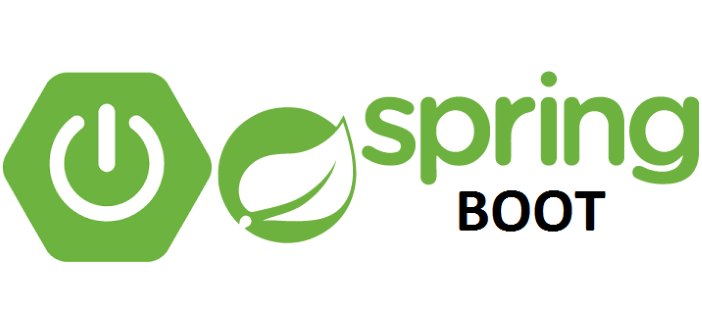Next.js: In-Depth Framework Analysis
Next.js: In-Depth Framework Analysis
Key Takeaway: Next.js delivers a hybrid rendering model combining server-side rendering (SSR), static site generation (SSG), and client-side rendering (CSR) in a single React-based framework. Its built-in performance optimizations, file-based routing, and full-stack capabilities make it an ideal choice for agencies needing SEO-friendly, high-performance web applications and sites.
Introduction
Next.js is an open-source web development framework built on React and maintained by Vercel. First released in October 2016, Next.js extends React’s client-side focus by offering seamless SSR and SSG, automatic code splitting, and a simple file-based routing system, enabling developers to create production-ready web applications without extensive configuration.wikipedia
History and Origins
Next.js was conceived by Guillermo Rauch and first published on GitHub on October 25, 2016. It was founded on six guiding principles:
- Zero-configuration setup requiring minimal boilerplate
- JavaScript everywhere, with both front and back ends in JS
- Automatic code splitting and SSR per page
- Configurable data fetching mechanisms
- Predictive optimization anticipating user requests
- Easy deployment, particularly on Vercel’s platformwikipedia
Key milestones:
- Next.js 2.0 (March 2017): Enhanced build efficiency and scalability of hot module replacement.
- Next.js 7.0 (September 2018): Upgraded to Webpack 4 and added React Context API support for dynamic routing.
- Next.js 8.0 (February 2019): Introduced serverless function support, enabling per-page lambdas on Vercel.
- Next.js 9.3 (March 2020): Added built-in CSS/SASS modules and performance optimizations.
- Next.js 9.5 (July 2020): Launched Incremental Static Regeneration (ISR) to update static pages without full rebuilds.
- Next.js 11 (June 2021): Migrated to Webpack 5, previewed real-time collaboration, and introduced automatic Create React App migrations.
- Next.js 12 (October 2021): Integrated a Rust-based compiler for faster builds, AVIF image support, Edge Functions, and middleware.
- Next.js 13 (October 2022): Debuted the App Router (beta) with React Server Components, streaming support, and laid the groundwork for Turbopack and Turborepo.
- Next.js 14 (October 2023): Enhanced edge runtime memory management.
- Next.js 15 (October 2024): Released Turbopack as the default bundler, React 19 compatibility, and asynchronous request APIs.wikipedia
Core Features
- File-Based Routing: Pages map to files in the
/pagesdirectory, simplifying route creation—each file auto-generates a route.wikipedia - Hybrid Rendering Modes: Choose per-page between SSR (
getServerSideProps), SSG (getStaticProps/getStaticPaths), ISR (viarevalidate), or pure CSR.nextjs - API Routes: Build backend endpoints alongside front end in
/pages/api, eliminating separate server stacks for simple back-end logic.dev - Automatic Code Splitting: Only the code required for the current page loads, reducing bundle sizes and accelerating initial load times.dev
- Image Optimization: The
<Image>component automatically optimizes, lazy-loads, and resizes images for different devices.dev - Built-In CSS Support: Native support for CSS Modules, Sass, Tailwind CSS, and CSS-in-JS solutions without extra configuration.dev
- Edge Functions & Middleware: Run logic at the CDN edge for personalization, A/B testing, and authentication with minimal latency.dev
- Fast Refresh: Immediate feedback on code changes without losing component state, improving developer productivity.pagepro
- TypeScript Out-of-the-Box: First-class support for TypeScript, including type checking and editor integrations.dev
Benefits
- Performance Optimization:
- SSR & SSG enable faster time-to-first-byte and improved SEO compared to client-only React apps.
- ISR updates static pages on demand, combining build-time speed with content freshness.dev
- SEO-Friendly:
- Pre-rendered pages and meta tag control (
next/head) ensure crawlers index full HTML, boosting organic traffic.dev
- Pre-rendered pages and meta tag control (
- Full-Stack Capabilities:
- Built-in API routes let developers implement back-end logic (authentication, data fetching) alongside UI code, reducing infrastructure complexity.dev
- Developer Experience:
- File-based routing and minimal setup mean engineers spend less time configuring and more time building features.
- Fast Refresh and comprehensive error overlays streamline debugging.pagepro
- Scalability:
- Edge functions and serverless deployment on Vercel automatically scale with traffic without manual server management.
- Turbopack accelerates local builds and supports monorepos via Turborepo.
- Versatility:
- Supports hybrid rendering per page—agencies can optimize critical pages for SEO and interactivity pages for client-side speed.
- Integrates seamlessly with popular CMSs (Contentful, Strapi, WordPress) and headless commerce platforms.
Drawbacks
- Learning Curve:
- Requires understanding SSR vs. SSG, ISR, routing conventions, and edge middleware to fully leverage capabilities.dev
- Server Costs & Complexity:
- SSR pages demand a running server or serverless functions, increasing hosting expenses compared to pure SSG.
- Managing cold starts in serverless environments can affect performance.
- Opinionated Structure:
- File-based routing and directory conventions may feel restrictive for highly custom routing schemes, requiring workarounds or custom servers.dev
- Edge Case Limitations:
- Complex background tasks (cron jobs, long-running processes) are less suited to Next.js’s serverless model, often requiring separate services.
- Fragmented Ecosystem:
- Rapid version releases and multiple community plugins can lead to inconsistency; agencies must curate dependencies carefully to ensure long-term maintainability.
Use Cases
| Category | Description |
|---|---|
| E-Commerce Sites | High-traffic storefronts leverage SSG for product pages and ISR for inventory updates, while SSR secures checkout flows. Integrations with Shopify or BigCommerce via headless APIs ensure dynamic content freshnessstackfive. |
| Marketing & Landing Pages | Convert visually rich, static content into SSG-built pages for blazing load times, with incremental updates on campaign assets via ISR. A/B testing middleware personalizes content at the edge. |
| Content-Driven Blogs | Utilize SSG and ISR for blog posts, ensuring SEO and rapid page delivery. Rich media and code demos load selectively via dynamic imports, optimizing performance for readersstackfive. |
| Enterprise Dashboards | Combine SSR for authenticated admin portals (real-time data) and CSR for interactive components like charts and tables. Code splitting ensures only necessary modules load per dashboard view. |
| Real-Time Collaboration Tools | Build live chat, document editing, or whiteboarding platforms using API routes for WebSocket back ends, edge middleware for authentication, and CSR for low-latency UI updates, leveraging Next.js’s hybrid model for optimized performance. |
| Documentation and Knowledge Bases | Pre-render documentation with SSG, enabling instantaneous navigation across thousands of pages. Search indexing is enhanced via server-generated metadata, while custom hydration provides interactive code examples and playgrounds. |
| Progressive Web Apps (PWAs) | Combine SSG-generated shell with CSR-driven interactivity for offline-capable PWAs. Service worker setup via next-pwa plugin and built-in caching strategies deliver app-like experiences on mobile devices. |
| Static Microsites & Microsessions | Launch promotional microsites or event sites quickly with SSG and ISR, enabling scheduled content roll-outs (e.g., countdowns, speaker bios). Edge middleware handles geolocation redirects and A/B experiments. |
| Server Components Adoption | Employ React Server Components (RSC) in Next.js 13+ App Router to offload data-fetching and rendering logic to the server, reducing client bundle size and improving TTFB for content-heavy pages like e-commerce catalogs or social feedsstackfive. |
Conclusion
Next.js epitomizes the next generation of React frameworks by seamlessly merging SSR, SSG, ISR, and CSR within a unified, developer-friendly architecture. Its file-based routing, built-in API routes, and edge-optimized middleware allow agencies to deliver highly performant, SEO-optimized, and scalable web applications without extensive configuration. While mastering Next.js’s hybrid rendering modes and managing serverless costs requires investment, the DX improvements, rapid iteration cycles, and out-of-the-box optimizations make it a future-proof choice for client projects ranging from marketing sites and e-commerce to enterprise dashboards and real-time collaboration platforms. By adopting Next.js and leveraging its ecosystem—Vercel hosting, Turbopack, and community plugins—agencies can accelerate time-to-market, reduce maintenance overhead, and deliver cutting-edge digital experiences that delight end users and drive business results.
references:
- https://en.wikipedia.org/wiki/Next.js
- https://nextjs.org/docs/pages/building-your-application/data-fetching
- https://dev.to/matthewlafalce/pros-and-cons-of-nextjs-3nh9
- https://pagepro.co/blog/what-is-nextjs/
- https://www.stackfive.io/work/nextjs/10-practical-use-cases-for-next-js
- https://www.codewalnut.com/learn/pros-and-cons-of-using-nextjs
- https://www.devlane.com/blog/what-is-server-side-rendering-in-next-js-pros-and-cons
- https://pagepro.co/blog/pros-and-cons-of-nextjs/
- https://www.youtube.com/watch?v=LTkA4aMhkds
- https://www.reddit.com/r/reactjs/comments/klsxye/understanding_nextjs_use_cases_proscons_compared/
- https://www.linkedin.com/pulse/react-vs-nextjs-understanding-differences-use-cases-shakil-bhuiyan-b7boc
- https://leobit.com/blog/overview-of-next-js-for-modern-web-apps-pros-cons-and-use-cases/
- https://nextjs.org/showcase
- https://www.altexsoft.com/blog/nextjs-pros-and-cons/
- https://nextjs.org/docs/app/guides
- https://dev.to/richkurtzman/advantages-and-disadvantages-of-nextjs-5hg6
- https://nextjs.org/docs
- https://www.aalpha.net/articles/nextjs-advantages-and-disadvantages/

